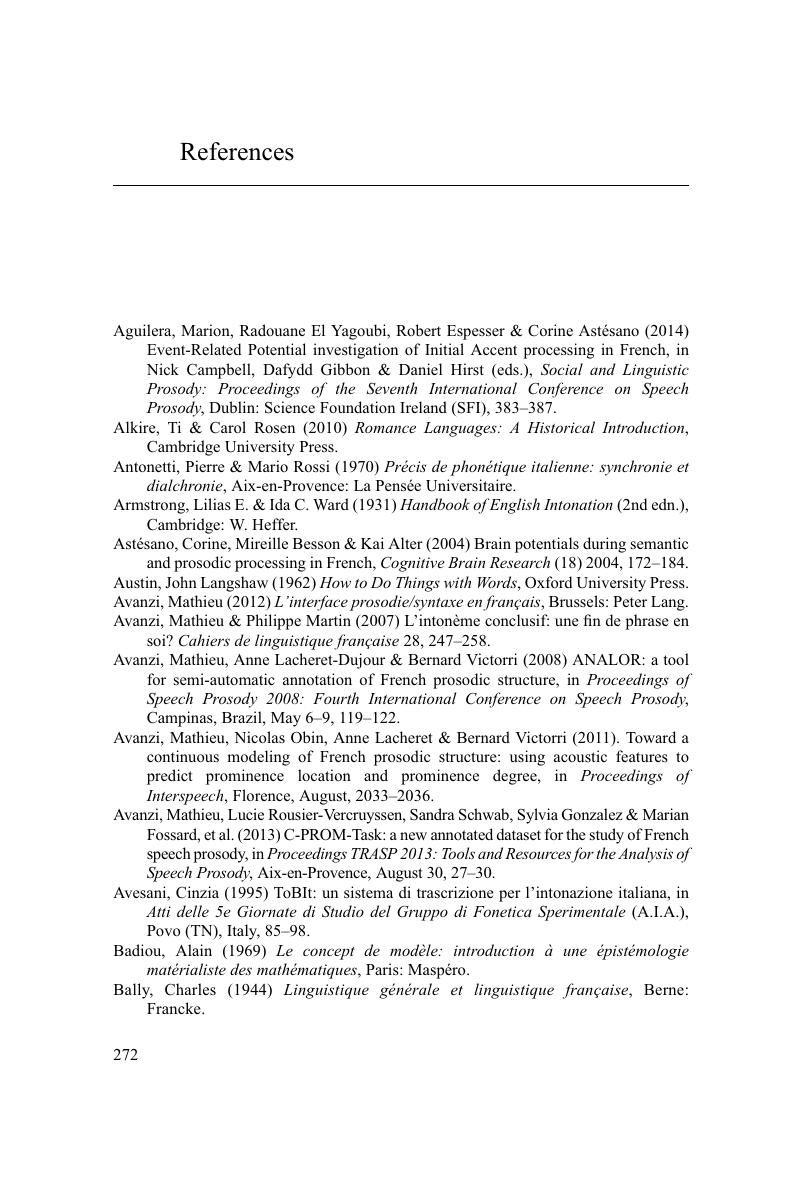Book contents
- The Structure of Spoken Language
- The Structure of Spoken Language
- Copyright page
- Contents
- List of figures and maps
- List of tables
- Preface
- Book part
- Key concepts
- 1 Introduction
- 2 The role of technological advances
- 3 Transcription systems
- 4 The Autosegmental-Metrical Prosodic Structure
- 5 The Incremental Prosodic Structure
- 6 Lexical stress in Romance languages
- 7 The Incremental Prosodic Structure in six Romance languages
- 8 Macrosyntax
- 9 Applications
- 10 Conclusion
- 11 WinPitch
- References
- Analyzed corpora
- Author index
- Subject index
- References
References
Published online by Cambridge University Press: 05 December 2015
- The Structure of Spoken Language
- The Structure of Spoken Language
- Copyright page
- Contents
- List of figures and maps
- List of tables
- Preface
- Book part
- Key concepts
- 1 Introduction
- 2 The role of technological advances
- 3 Transcription systems
- 4 The Autosegmental-Metrical Prosodic Structure
- 5 The Incremental Prosodic Structure
- 6 Lexical stress in Romance languages
- 7 The Incremental Prosodic Structure in six Romance languages
- 8 Macrosyntax
- 9 Applications
- 10 Conclusion
- 11 WinPitch
- References
- Analyzed corpora
- Author index
- Subject index
- References
Summary

- Type
- Chapter
- Information
- The Structure of Spoken LanguageIntonation in Romance, pp. 272 - 284Publisher: Cambridge University PressPrint publication year: 2015



